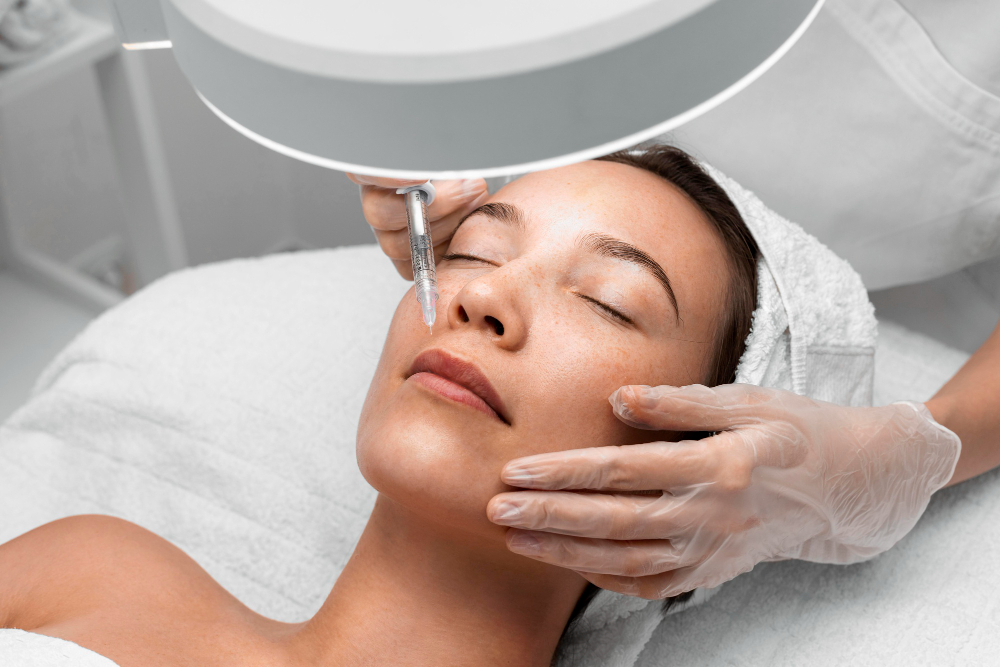The Complete Beginner's Guide to Facial Fillers and Injections

Facial fillers and injectables have revolutionized the beauty industry by providing non-surgical enhancements for those who wish to turn back the clock or alter facial features subtly. They offer a quick and relatively painless way to reduce the signs of aging or adjust the contours of your face. If you're intrigued but not yet ready to sit in the treatment chair, this guide will walk you through everything you need to know about facial fillers and injections.
Understanding Facial Fillers and Injectables
Facial fillers and injectables are gel-like substances that are injected beneath the skin to restore volume, reduce wrinkles and fine lines, and even improve facial contours. The popularity of these treatments has skyrocketed because they are quick, effective, and require minimal downtime.
Different Types of Fillers
There are several types of fillers available, each designed with specific purposes and with differing compositions. Most fillers are made of hyaluronic acid (HA), a substance that naturally occurs in the body and is well-tolerated. Some examples of hyaluronic acid fillers include Restylane, Juvéderm, and Belotero. Other fillers might include polylactic acid, which stimulates collagen production, or calcium hydroxylapatite, which has longer-lasting effects.
How Fillers Work
When injected into the skin, fillers work in a few different ways depending on their composition. The primary functions are to add volume and fill space, which can help to smooth out wrinkles or to augment features like the lips or cheeks. Some fillers also work by attracting water molecules, which can further add volume to the injection site.
The Procedure: What to Expect When Getting Fillers
A facial filler procedure typically starts with a consultation, where you'll discuss your goals and the treatment plan. On the day of the procedure, your practitioner will clean the injection sites and may apply a topical anesthetic to numb the area. The filler is then injected beneath the skin using a fine needle or cannula. The whole process usually takes between 15 to 60 minutes.
Pain and Downtime
Most patients find the procedure to be relatively painless, with at most mild discomfort. After the appointment, you might experience some redness, swelling, or bruising, but these side effects typically subside within a few days. There is little to no downtime with fillers, and you can usually return to your normal activities right away.
Longevity of Results
The longevity of fillers depends on the type used, the area injected, and individual factors. Generally, hyaluronic acid fillers last 6 to 18 months, while other types of fillers may have more extended effects.
Choosing a Filler and a Practitioner
The choice of filler and practitioner are pivotal to achieving the results you desire. It's essential to do your research and choose a qualified, experienced provider who can recommend the best filler for your goals. When selecting a practitioner, consider factors such as their training, experience, before-and-after photos, and patient reviews.
Consultation
A thorough consultation is key for any injectable treatment. During this session, you will discuss your medical history, allergies, and the results you hope to achieve. Your practitioner will then recommend a personalized treatment plan that outlines the type and amount of filler needed.
Cost Considerations
The cost of fillers varies based on the type of filler and the amount used. It's critical to have a clear understanding of the cost before moving forward with the treatment, as most insurance plans do not cover cosmetic procedures.
Post-Treatment Care and Maintenance
To ensure the best results and a comfortable recovery, there are several post-treatment care steps you should follow. Your practitioner will provide you with specific aftercare instructions, but some general guidelines include avoiding strenuous exercise, not touching or applying makeup to the injection sites immediately, and staying hydrated.
Touch-Up Treatments
Over time, your body will naturally break down the filler. To maintain your results, you may need occasional touch-up treatments. These sessions typically involve injecting smaller amounts of filler and are less expensive than the initial treatment.
Combining Treatments
Many people opt to combine fillers with other treatments like Botox or laser therapy to address multiple aging concerns at once. This approach, known as a "liquid facelift," can provide comprehensive rejuvenation without the need for surgery.
Risks and Side Effects of Facial Fillers
While fillers are generally safe and effective when administered by a skilled professional, there are some risks associated with these treatments. Common side effects include swelling, redness, and bruising at the injection site. More serious but rare complications can include infection, allergic reaction, and vascular occlusion.
Allergic Reactions
If you have a history of severe allergies, it's crucial to let your practitioner know. Although hyaluronic acid is well-tolerated by most people, allergic reactions to fillers are possible.
Vascular Occlusion
Vascular occlusion occurs when a filler is inadvertently injected into a blood vessel, which can lead to tissue death if not treated promptly. This complication is extremely rare but highlights the importance of choosing an experienced practitioner.
Final Thoughts on Facial Fillers and Injectables
Facial fillers and injectables can be powerful tools for enhancing your natural beauty and restoring youthfulness to the face. When considering these treatments, it's important to be well-informed and prepared. Remember to choose a reputable practitioner, communicate your goals clearly, and follow all pre- and post-treatment instructions carefully.
If you're interested in exploring fillers in Windermere, FL, contact Vamped Aesthetics & Design. Our team of experts can guide you through the process, answer your questions, and help you achieve the look you desire. As with any cosmetic procedure, it’s important to be fully informed and prepared. Remember to choose a reputable practitioner, communicate your goals clearly, and follow all pre- and post-treatment instructions carefully.
Embarking on a journey with fillers can be an exciting one, offering the potential to look and feel your best. With this comprehensive guide, you are well-equipped to make informed decisions about your cosmetic enhancement.